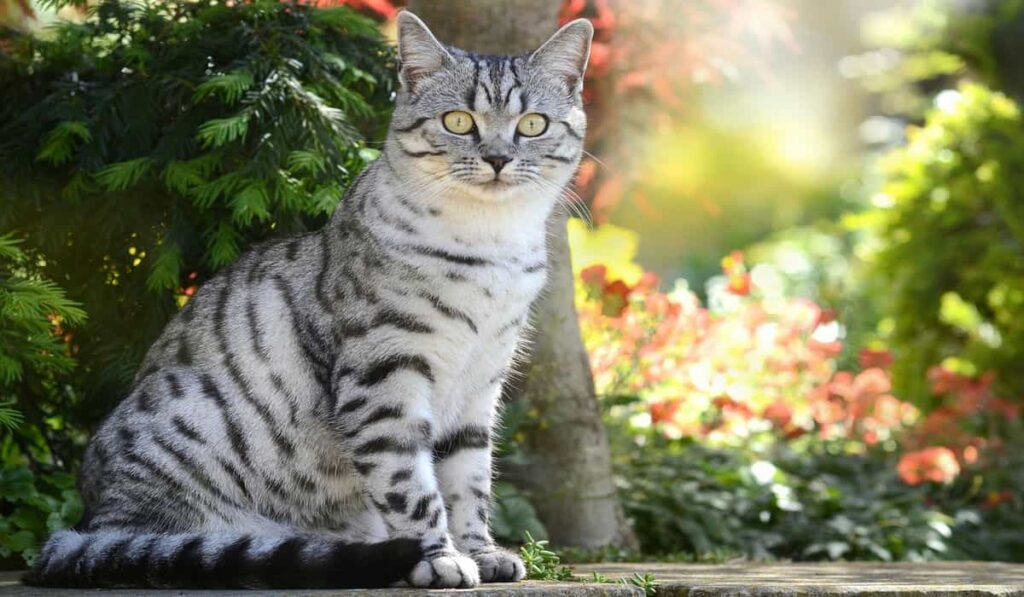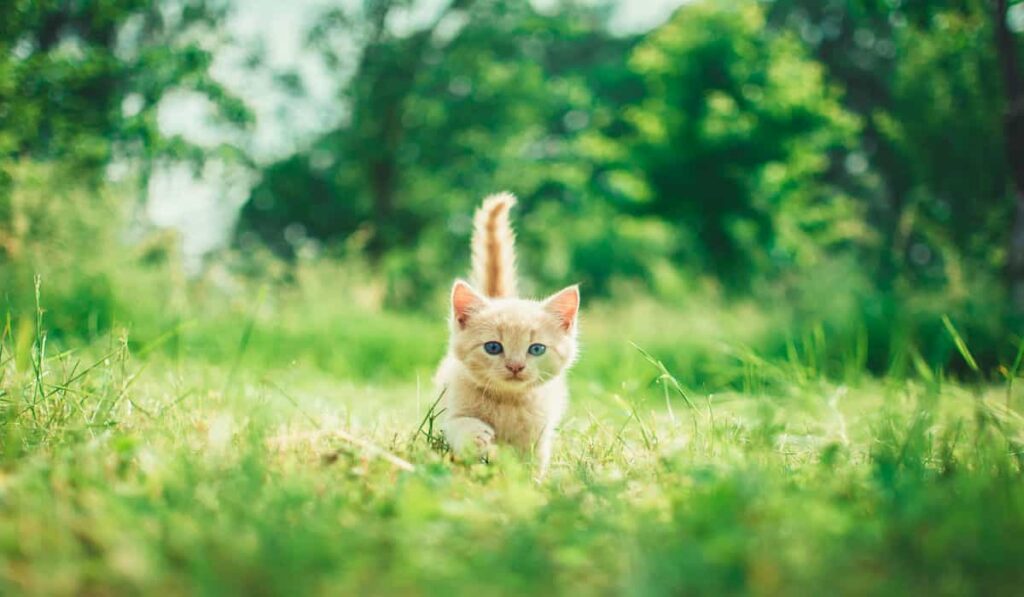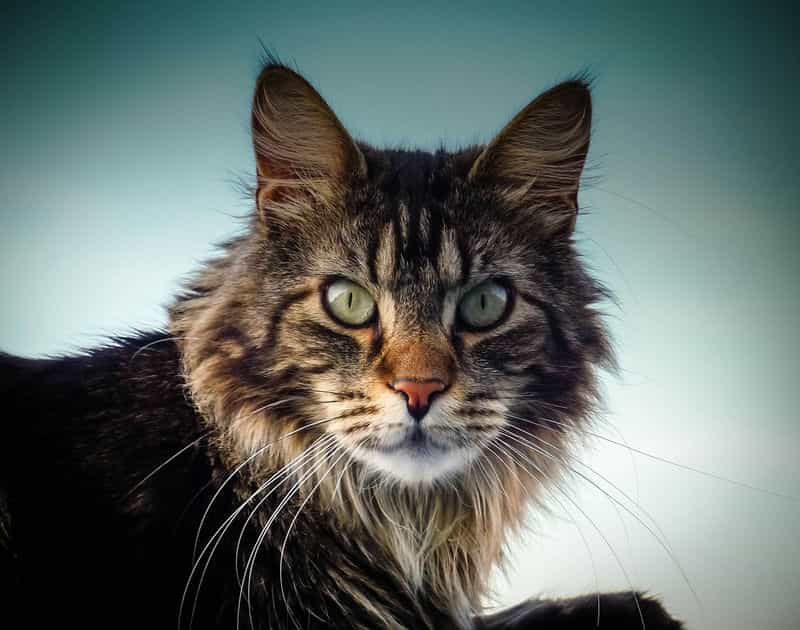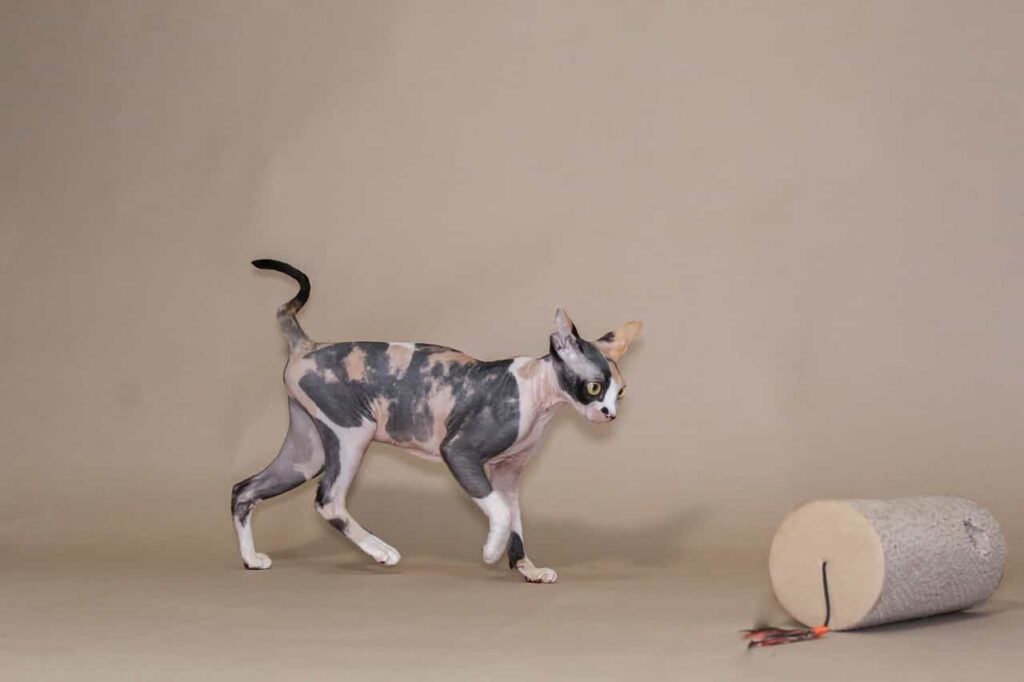Welcome to the enchanting world of the Birman cat, a breed that captivates with its striking beauty and serene demeanor. Known for their luxurious silky coats, mesmerizing blue eyes, and gentle personalities, Birmans hold a special place in the hearts of cat enthusiasts. This guide delves into the intricacies of “Birman cat grooming,” explores the “Birman cat behavior,” and provides essential insights into their “Birman cat diet” and health.
Whether you’re a seasoned Birman owner or considering “Birman cat adoption,” we’ll guide you through the nuances of “caring for Birman kittens,” “training Birman cats,” and ensuring their wellbeing. Join us as we celebrate the unique charm of Birmans, from their “Birman cat personality” to their distinctive “Birman cat coat patterns,” and learn how to provide the best care for these majestic felines.


Table of contents
Breed specialty of the Birman cat
Other names:
Sacred cats of Burma
Personality and characteristics:
Intelligent, affectionate, playful, sociable, friendly, gentle, loving, and quiet.
Body size:
Medium
Body length:
Up to 18 inches
Body weight:
Males are up to 15 pounds and females are about 13 pounds.
Coat length:
Semi-long to long.


Coat colors:
The Birman breed has various coat colors such as seal point, Blue point, Chocolate point, Redpoint, and Cream point.
Coat patterns:
Colorpoint, Tortoiseshell, Smoke, Tabby, and Silver-Tabby.
Friendliness to children, other pets, and strangers:
High
Grooming and caring requirements:
low
Vocalizing level:
Low
Shedding amount:
Moderated
Life circle:
Up to 16 years.
Allergenic tendency:
All cats are allergenic for those people who are allergic to Fel D1 protein.
Origin:
The origin of the Birman cat is unknown but most probably in Burma (Myanmar).
About the Birman kittens
The Birman kittens are incredibly sweet and adorable and low maintenance at the same time. First of all, you have to purchase a kitten that has spent at least 16 weeks with its mother.
But still, you have to think for a second to have such a tiny kitten because kittens are vulnerable and prone to genetic disease and they need extra vet visits which are expensive also. You have to spend extra money for extra treatments after regular vaccinations, annual check-ups, and so on.
Birman kitten price:
You can get a Birman kitten from $700-$1000.
Origin of the breed- Birman cat
Well, the history and origin of the Birman cat breed aren’t clear and properly recorded. There is a legend and myth about the Birman cats. The Birman cat breed is the sacred cat of its motherland Burma (Myanmar).
In Burma, it is believed that the Biran cats were lived in the temples and were the companions of the Kittah priests. The temples were situated in the mount of Lugh of Northern Burma. When the priests died, their souls lived in the same temples in the Birman cat’s body and waited for the next incarnation. That means, the priest’s souls became the Birman cats till the next incarnation.
However, the Birman cat made their way first to France. According to The Birman Cat Club of Australia, a pair of Birman cats was shipped to France in the early 1900s. The male cat died during the trip but the female was alive and was pregnant. Her name was Sita. Later Sita gave birth to a kitten, named Poupee de Madalpour.
More about the Origin of the breed- Birman cat
The Federation of Feline Francaise, which is the parent cat association of France, recognized the Birman cats as a separate breed. The breed was devastated due to the Second World War (1939-1945). Only 2 cats were alive and they were a pair. The male was Orioff and the female was Xenia de Kabaa. The owner of the pair was Baudoin-Crevoisier.
The offspring of the pair was the founder of the Birman cat breed. There was no way to rebuild the breed by crossing it with other long-haired cats such as the Persian cat and Siamese cat breeds. By the 1950s, purebred Birman kittens were produced.
The Governing Council of the Cat Fancy (GCCF), which is the parent cat association of the United Kingdom, recognized the Birman cats as a separate breed in 1965, and The Cat Fancier’s Association (CFA, USA) recognizes it in 1966.
The first Birman cat was a Seal Point Burmese cat. The Bluepoint was added in 1959. The English Birman breeders added more colors such as Chocolate, Red, and Tabby point. The Birman breed is the ancestor of the new cat breeds such as the Ragdoll cat breed.
The appearance of the Birman cat breed
Now I will tell you about the mesmerizing appearance of the Burmese cat breed. They are for sure gorgeous cats. The Birmans are medium-sized cats with a weight of 15 pounds, and a length of 18 inches.
The stocky cats have a solid and robust build. At the same time, their bodies are elongated. Birman cats have round heads and strong jaws. Their Roman noses give them an excited appeal.
Their coats are semi-long to long in length. The Burmese are gifted with distinguishable and soft silk-like fur. Their fur doesn’t get matted as these cats don’t have an undercoat which is excellent news in terms of grooming.


The Birmans have a heavy rough around their necks, giving them a royal look. They might have curly hair on their belly area but sets them apart in their coloring.
more about The appearance of the Birman cat
The Birmans are colorpoint cats. That means, their bodies are lighter with darker points of color in their faces, ears, tails, and legs. The points can have various colors such as seal point, Blue point, Chocolate point, Redpoint, and Cream point. Their coat patterns are Colorpoint, Tortoiseshell, Smoke, Tabby, and Silver-Tabby. Basically, every point of color is acceptable but the most common colors are seal and Blue.
Their main distinctive trait is theri Whit paws which sets apart them from all other breeds. Only the Snowshoe cat breed has the same White paws. Whatever the coat color is, the paws are always White if it is a real Birman cat.
Many people get confused between Birmans, Himalayans, and Siamese cats but they can recognize Birmans easily by noticing the snow-white paws of the Birman cats.
The beautiful Birman cats have striking Sapphire Blue eyes. They are almost round and set apart with sweet expressions. Their eyes can be only Blue but different sheds are acceptable.
The types of Birman cat according to their coat colors and patterns
The main coat pattern of the Biman cats is colorpoint but maybe you know that the breed was almost devastated due to World War II. Only 2 cats were alive. So, it became essential to cross the 2 cats with other cat breeds to preserve the breed. As a result other coat colors and patterns occurred.
- Seal point:
It is the classic and main type of The Birman cat breed. Seal Point is actually a golden cream color with dark brown markings on the face, ears, and tails.
- Blue Point:
Blue Point is similar to the Seal Point pattern. The coat color is also classic golden cream with Deep Blue markings on the face, ears, and paws.
- Chocolate Point:
The coat color of Chocholate Point Birmans is intense Ivory and the markings are deep Chocolate Brown. It is much rich than the Seal Point color.
- Lilac Point Birman cats:
Lilac means White or pale White color. The Lilac Point Birman cats are the same as the White ancestors of the breed which lived in the temples of its homeland Burma (Myanmar). It is a very special and rare pattern of Birman cats with Pinkish markings on their faces, tails, and paws. The pattern is rare because the recessive gene is responsible to create the coat color.
- Red Point Birman cats:
Red Point doesn’t mean actual Red. it is near to Orange in color or bright Reddish-Gold in color. There is a remarkable thing that the Red Point-typed Birmans have some Tabby features in their coats.
- Cream point Birman cats:
The Cream Point Birman cats have a Golden-Cream base coat and the light Coffee-Cream colored markings are often invisible. In some Birmans, the Coffee-Cream coats can be pale White. In that case, the Markings become a bit visible.


The coat pattern types of the Birman Cat breed
- Tortoiseshell pattern:
Well, Tortoiseshell is not any color but instead a coat pattern. The points of a Tortoiseshell consist of 3 or 4 different colors and all are spotted together on the faces, paws, and tails. The coat has an Ivory or golden color and the points have Black, Chocolate, Seal, and Blue color.
- Tabby Pattern:
Once again, Tabby is not a color, it’s a coat pattern only. The tabby pattern has a vast range of colors. The most distinctive trait of the Tabby pattern is an ‘M’ marking on the cat’s forehead.
- Silver Tabby pattern Birman cats:
Silver Tabby means very Similar to the Smoke colored coat with Tabby markings. It is a rare and very special type among Birman cats. Very few breeders are interested in the Silver Tabby pattern.
Temperament and nature of the Burmese cat breed
The Birmans are wonderful cats with sweet dispositions. They are popular both for their looks and temperament and nature. They are affectionate and gentle companions. The Birmans love their people very deeply and are always excited to spend their time in the presence of their humans.
Even if they’re not happy to be held Burmese are easy to handle and extremely docile. A real plus when visiting the veterinarian or traveling. Their love for people doesn’t stop here. Though most Birmans greet visitors at the door very curiously, you should never leave your Birman kitty outside because they are very trusting. So, it is very easy to steal them.
But their trusting behavior had an advantage too. When you go for a vacation, you Burmese accustomed easily to the pet sitter and you can enjoy your vacation without any tension.
The Birman breed is a highly adaptable cat breed. They can adjust to your time and life schedule. However, they are pretty smart and like to oversee every move you take especially when you’re moving toward the kitchen.
Moving back to their adaptability, Birmans typically do well even in small apartments. They typically get along with other cats; especially, with those cats with similar temperaments and nature. It is said about the Burmese that. They love to be the alpha cat.
Nature of Birman cat
The Birmans are playful cats but not very active. They much prefer you move the cat teaser around rather than chase after it. Their docile nature makes them perfect even for families with small kids. Birmans are patient cats and don’t like toddlers like many breeds.
Of course you have to supervise your toddlers and childrens while interacting with your pets. They do also great as long as the dog leans to respect the Birman and its space. In terms of intelligence, they’re smarter than the average cats. The Birmans can be taught tricks but it can be challenging to make them learn.
From my research, Bimans love cuddles and are equally affectionate towards family members. They’re also curious creatures and will come to see whatever you’re up to but they’re not overly demanding or needy.
The Birman is a very calm and quiet cat. They’ll speak up when they need something but in a soft and pleasant voice. It is a pleasure to hear their chirping. They’re not so talkative, being somewhere in the middle. As Birman need love and people they aren’t suitable for those people who are working away from home.
In that case, you better keep 2 Birmans together but it is still not an ideal situation. On the other hand, Burmese do well in busy households. Overall this is a playful and curious breed with a gentle, non-demanding way of interacting.
What kind of people should have a Birman cat?
People with big families including toddlers and children are the best for Birman cats. As you know that Birmans are very people oriented and a little territorial so they don’t do well with other territorial cats. So, if you have another territorial cat in your house then a Birman is not for you.
The Burmans can also adjust to a small family but someone has to be at home with them because the Birmans can’t be left alone for extended periods of time. So, if the time period is 9 to 5 then it is ok for them. They will manage and will greet you happily at the door after a busy hectic day.
But if your travel a lot then you have to arrange a cat sitter or make your family schedule so that anyone in your family to accompany the kitty.
Caring, grooming, exercise, and training of Birman cat:
Caring:
The Birman is a medium-active and playful breed. It does not need a lot of toys. A few fun toys, toy mice, and feather wands and balls are enough to engage them in a play session daily several times.
But if want to provide with them vertical scratches like tall cats trees or posts and horizontal like cardboard or seal scratches, then it will be fine to keep them busy.
Grooming:
The breed not only looks great but is also low-maintenance than other long-coated cat breeds. They don’t have any undercoats, so they don’t get matted. The single helps to resist matting. Only one-time weekly brushing is enough for their silky and lavish coats. Use a soft and slicker brush to groom them.
Dental care is very important for all cats. Brush your Birman’s teeth with a gap of one day each, check teeth weekly and use dental treats for fresh breath.
Check the ears of the kitties weekly and if they look dirty then clean them with a cotton ball soaked in vinegar and water. If their ears look reddish, then it is a serious matter, and going to the vet is a must. Trim their nails very carefully as there are keen vain around the nails of your kitty. Their nails need to be trimmed for the sake of your kids also.


Birman cat Exercise
The Birmans are not super active, so you need to pursue them a little so that they can keep them busy. This will be the best exercise for them.
You can make an arrangement for a cat enclosure for better exercise. As Birman cats are so lovely, beautiful, and coveted so there is a high risk of stealing them. Besides, they can be heated by a car or attacked by big animals. So, a large cat enclosure will be the best for their mental, and physical exercise.
You also can provide them with a bird-watching station so that they can be mentally stimulated. Many people don’t allow their pets all-time indoors. Though they have strong logic going outside sometimes is very good exercise for your pet. In that case, you can take your Birman walking with a leash. This walking will be helpful for both you and your Birman.
Training:
The Birman breed is laid-back and smart at the same time. You can train and teach them. The training sessions are also helpful to make a strong bonding between you and your Birman.
You can train them to walk with a leash or harness but make sure that your kitty is happy with that. Never force them to get used to something but the litter box training isn’t counted in it. You must make them used in the litter box.
The Birmans are usually happy going outside with their owners. So, training to go for a road trip, hiking, and popping them for a cat backpack will be nice. Some Birmans enjoy the outing and some will stay home with a cat sitter. You have to recognize the preference of your kitty first. Besides, you must teach your Birman to listen to your commands and respond by calling its name.
Living needs for the Birman cat
The Birmans are not highly demanding and maintain cats. Their living needs list is very short. Just one thing you have to keep in mind is that they don’t do well alone. Someone has to be with them to check in and that someone can be a big child.
They need-
- A separate room,
- Some ordinary toys like cat teasers, Toy mice,
and Plastic balls.
- A tall window so that they can watch the birds and outside views.
- A tall cat tree or shelf designed for sleeping.
- A loving and caring family and their love and attention.
- High-quality feline diet.
- Fresh and clean water.
- A clean litter box.
- A little grooming, caring, and others.
- Regular vet check-ups, vaccination, and treatments.
- A daily outing for mental and physical wellness.
Health and problems of the Birman cat breed
All purebred cats are prone to some health issues and diseases. So, the Birmans are not diffrent. When you adopt a pet from a breeder, you must make sure that the breeder is reputable and trusted that he or she has conducted all tests including DNA and that all the vaccines are properly given.
The kittens have problems with shaking or trembling and kidney dysfunction. Besides this, the Birman cats are prone to
- Congenial Hypotrichosis:
This is the condition of baldness and no hair growth all over the body.
- Spongiform Degeneration:
It is a brain defect caused to Dementia and other mental problems.
- Thymic Aplesia:


It flows another disease to health.
- Corneal Dermoid:
more diseases of Birman cat
A very serious condition. When hair grows in the eyes. Only surgery can remove the hairs and after that regular checkups are a must.
- Hypertrophic Cardio Myopathy (HCM):
When heart muscles get thickened and make obstacles to generating and supplying blood throughout the body. It is called hypertrophic Cardio Myopathy.
- Obesity and Diabetes:
2 very common problems among all cats. Over-feeding and lack of activity cause obesity and Diabetes. So, be careful about that.
So, to keep your Birman healthy and happy you must take your Birman to the veterinarian for a regular check-up. It is better to keep an extra budget for the treatment after vet visits, and regular vaccinations. You also can take insurance for the sunset years of your pet’s life because old age is such a time when most of the expenses are about only health.
There is another important thing about the health and conditions of your Birman and that is making them sterile. When the cats reach their sexual maturity, the males get territorial. They spray their urine to mark their territory and the female gets noisy and fights with another animal. So it is a very good idea to make the males neutered and the females spayed so that they can get rid of many sexually-transmitted diseases and unwanted kittens.
The life expectancy of the Burman cat breed
The Birman isn’t a longer liver breed. Though they have a stockier build, they don’t live more than 16 years.
Food and nutrition tips for the Birman cat breed:
Some Birmans prefer raw foods, some of them prefer kibble and some of them wet foods. If your Birman is a poor drinker then 50% of raw foods and 50% of wet food will be ideal for your Birman. For any type of food you provide your kitty, make sure that the food is highly qualified and enriched with a lot of protein with real meat rather than the product meat.


The Birmans have a stockier bodies. So, they are at a high risk of getting obese and obesity can cause Diabetes and arthritis. So, be careful about feeding them. Always use a perfect measurement cup so that the measurement of food can be perfect. Feed your kitty according to theri age, size, and activity.
Drinking water is very important for your kitty’s health. Provide with them a lot of fresh and clean water so that their Kidny health remains in a good condition.
Some facts about the Birman cat breed:
- There was a famous Birman cat, named Choupette. It was born in 2011 and is the adorable pet of fashion designer Karl Lagerfeld.
- There are so many legends and myths about the Birman cat breed. One of them is the Birman cats are related to a Blue-eyed Goddes Tsun-Kyan-Kse. The Goddes gifted Blue eyes and White paws to all the cats of the temples where she was worshipped. The Blue eyes and White paws are the symbols of purity.
- Most people get confused between the Burmese cat and the Birman cat breed. But these 2 breeds are totally different breeds.
- The Birman cats are known as the Sacred cats of Burma (Myanmar).
- The origin and history of the Birman cats are clumsy and unclear. There are so many myths and legends related to the breed. So, it is very difficult to get to know about their hailing story.
- The Birman breed was near to being wiped out during World War II. the initiative to preserve the breed was taken otherwise the breed could be a forgotten story of the cat world forever.
- There are some Birmans who have Red eyes also and this is a genetic disorder.
- Birman kittens are born with a White coat and after a few weeks of their birth, they get the coat colors.
Male VS female Birman cat
Some people get confused that whether male or female cats will be suitable for them. I would divide you to visit the kitty or kitten you want to adopt or purchase.
Every cat is different. Suppose you had a female kitty before and it was very outgoing and you were supposed to be very worried about her. But it doesn’t mean that all female cats are like that.
Female cats are more independent than male cats. They can be very noisy, stubborn, and used to fight other female cats if they are not sterilized. But female cats don’t mark territory.
Whereas, male cats are more affectionate, lovable, and dependent than females. They are territorial and mark their territories by spraying Urine. The running away tendency is very much noticeable among male cats.
So, sterilize your male and female kitty to get rid of these problems. However, male cats are bigger than females in size and their appetite is larger than females as well.
Reasons why a Birman cat may not be the best for you
Birman cats are very beautiful, adorable, coveted, low-maintenance, and calm cats but may not be the best choice for you. Here I’m telling some reasons why a Birman cat is not for you and your family:
- The Birman is a laid-back cat breed. They are not so active and playful cats. So, if you want a more active, energetic, and playful cat, then Birmans may not be the best for you.
- The Birmans are not so adventurous. They don’t want to roam around outside alone. They love to go out with their owners. So, if you want an adventurous cat, then the Birman breed is not a good choice for you.
- The Birmans are affectionate and attention seeker cats. They love to be with their owners. They love to play with their families and want to spend some time daily in their owner’s lap. So, if you can’t give attention and love to your kitty, then look for another cat.
- The Birman cats are prone to some health issues. You have to spend extra money and time on their treatment. So, if you don’t want or maybe you don’t have the ability then Birmans cats may not be suitable for you.
- The Birman cats can’t be left alone for extended periods of time. There is someone who has to be with them all the time.so, if all the members of your family go outside together and you can’t manage a pet sitter then look for another cat instead of a Birman.
- All cats don’t like to be at the center point of parties or get-togethers. Birman cats are like that. Maybe a party is going on in your house and you don’t see your Birman at the party. You have discovered it in its room. So, if you are not happy with that and want that your pet enjoys the party and loud music then the Birmans may not be the best for you.
I hope you have understood whether you should have a Birman cat or not.
Breed overview of the Birman cat
The Birmans are the sacred cats of Burma (Myanmar) and are named after their homeland Burma. it is a beautiful, laid-back, smart, mid-level active, playful, energetic, intelligent, sweet vocalist, and very affectionate cat breed. They love their family very much and want to stay with them all the time. They can’t be left alone for extended periods of time.
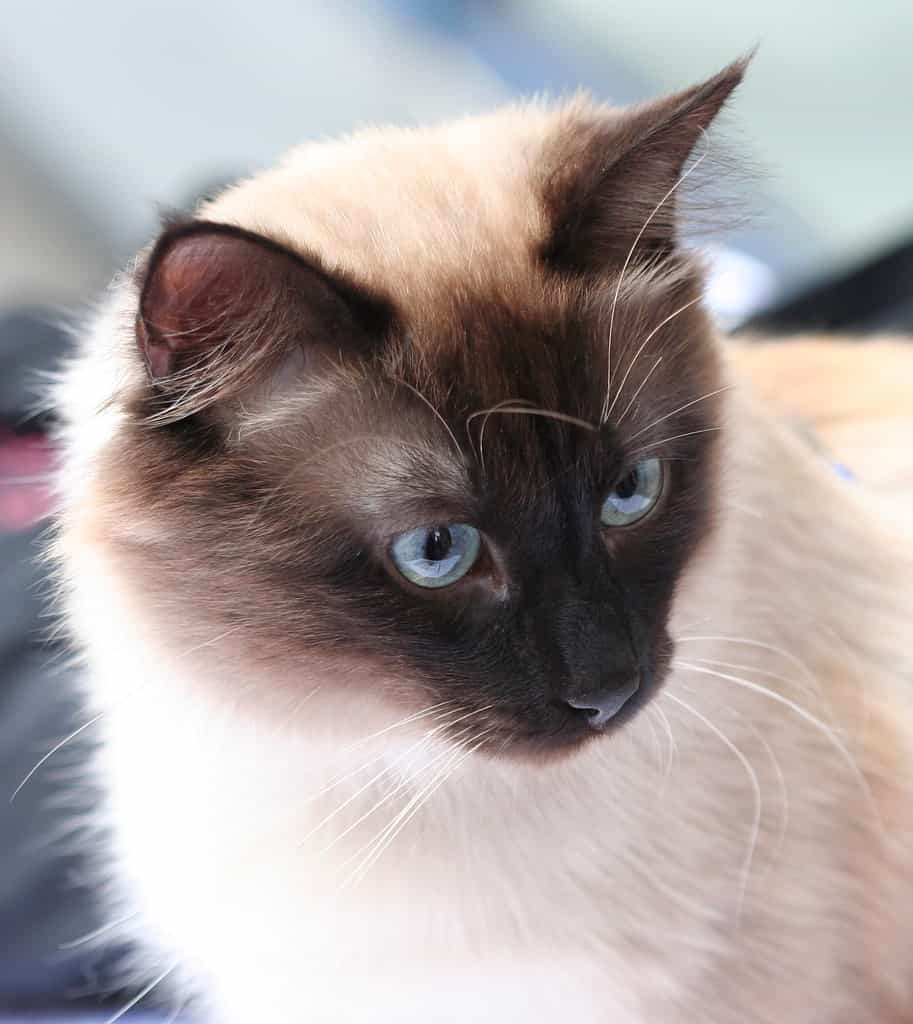

The Birmans are medium-sized cats with body lengths of up to 18 inches the body weight for Males is up to 15 pounds and for females is about 13 pounds. Their coats are semi-long to long. Their Coat colors are Seal point, Blue point, Chocolate point, Redpoint, and Cream point.
The Coat patterns are Colorpoint, Tortoiseshell, Smoke, Tabby, and Silver-Tabby. The Birmans also have Blue eyes and White paws. The Birmans can adjust to both small and big houses and families. It is a matter of wonder that though it is such a beautiful, adorable, and loving cat breed it isn’t on the list of the most popular cat breeds!
Tips for a Birman cat
First of all, you have to study the Birman cat breed that your want to adopt. Search on the internet or read journals and case studies on Birman cats. When you are confident enough and have decided to have a Birman then start from here-
Getting from a reputed and trusted breeder:
You can purchase a Birman cat from a reputed and trusted breeder. The parent organizations of cats such as The Cat Fancier’s Association (CFA), The International Cat Association (TICA), Sacred Cat of Burma Fanciers, National Birman Fanciers, and Fanciers Breeder Referral List publish lists of reputed and trusted breeders. So, check these websites and find a breeder near you.
The trusted and reputable breeders have their own websites and they never sell a kitten that hasn’t spent at least 16 weeks with its mother. These 16 weeks are very important for the kitten’s socialization.
The breeders will also provide you with the health and test results and updated certificates of vaccinations, take back guarantee and will be willing to keep contact after the deal is done.
Getting from cat shows:
The local cat shows are another great source to get pet cats. You can search the website of ‘cat show near me’ and go there. You will get original, pure, and healthy cats according to your desire.
Adopting a Rescue and Shelter:
You can also adopt a Birman cat from a Rescue or a shelter. You don’t know when a Birman needs a new home and owner. The organizations will be a very good source to adopt a Birman. Such as petfinder.com, adopt-a-pet.com, or local Birman Rescue Clubs.
After-adoption tips for Birman cat
Whether you have got your kitten or kitty from a breeder or Rescue or Shelter, make sure that the provider obeys the ‘Pet Lemon Laws’. Take your cat to the veterinarian immediately after getting it to check its health condition and to tress the hidden problems in it.
Birman cats near me:
You can search the website of https://birmancatsguide.com/birman-cat-breeders-near-me to get a Birman cat near you.
Birman cats rehoming:
There are so many pets including Birmans that need a new home and family due to their owner’s death, moving to any odd country, finacial crisis, or any other unavoidable situation. So, you can contact https://pet.net.net/cats-for-adoption/birman-cat-rehoming for this purpose.
Physical Characteristics and Coat Patterns of Birman Cats
The Birman cat, often referred to as the “Sacred Cat of Burma,” is renowned for its striking physical characteristics. These “silky-coated cat breeds” boast a medium to long luxurious coat that is remarkably soft to the touch, requiring regular “Birman cat grooming” to maintain its luster. The most distinctive feature of Birmans is their color-point pattern, similar to Siamese cats, but with “Birman cat coat patterns” that are unique to the breed.
Their deep blue eyes are another captivating trait, setting them apart from other breeds. The color contrast between their creamy body and darker points on the ears, face, paws, and tail adds to their elegant appearance. “Caring for Birman kittens” involves ensuring their coat is kept in pristine condition from an early age. These cats are not just about looks; their “Birman cat personality” is as beautiful as their appearance, making them a cherished “Birman cat as a family pet.”
Socialization for Birman Cats
Socialization is an essential aspect of a Birman cat’s life. Due to their inherently social and affectionate nature, “social behavior of Birman cats” is usually friendly and engaging. “Training Birman cats” in socialization should begin early to help them adapt well to various environments and interactions. These cats enjoy the company of humans and other pets, making them ideal companions in multi-pet households.
Effective socialization involves exposing them gradually to different people, pets, and situations. This process helps to develop their confidence and reduces the likelihood of “Birman cat behavior” problems. “Caring for Birman kittens” includes gentle handling and positive interactions to reinforce their naturally trusting nature. Socialized Birmans are known for their affectionate and gentle demeanor, often following their owners around the house and seeking attention.
Birman Cat Adoption Guide
Adopting a Birman cat is a decision that brings immense joy and companionship into your life. The process of “Birman cat adoption” should start with thorough research to understand the breed’s specific needs, such as “Birman cat grooming” and “Birman cat diet.” When considering adoption, it’s essential to think about the “Birman cat personality” and whether it aligns with your lifestyle. These cats are known for their affectionate, gentle nature, making them ideal pets for families and individuals alike.
It’s advisable to reach out to reputable “Birman cat breeders” or rescue organizations that understand the breed well. Inquire about the cat’s health history, particularly any “Birman cat health issues,” and ensure they have been well-cared for. “Caring for Birman kittens” involves more than just love; it requires commitment to their health, nutrition, and overall wellbeing.
Once you bring your Birman cat home, create a welcoming environment for them. This includes preparing a safe space, introducing them gradually to their new surroundings, and establishing a routine that includes regular “Birman cat maintenance.” Remember, adopting a Birman cat is a long-term commitment that requires patience, understanding, and love.
Housing and Safety for Birman Cats
Creating a safe and comfortable living environment is vital for the wellbeing of a Birman cat. As predominantly “indoor cats,” Birmans thrive in a home where they feel secure and loved. Housing for Birman cats should include a cozy sleeping area, access to clean water and food, and plenty of play spaces. “Birman cat safety” involves ensuring the home is free from hazards that could harm them, such as toxic plants or unsecured windows.
Providing scratching posts and toys is essential for their physical and mental stimulation, aligning with their playful “Birman cat behavior.” Regular “Birman cat grooming” is crucial in their housing environment, helping to maintain their coat’s health and prevent matting. It’s also important to monitor the temperature and lighting in their living space, considering their sensitivity to extreme conditions.
In terms of outdoor access, it’s generally safer to keep Birmans indoors to protect them from external dangers. However, if outdoor access is provided, it should be in a secure and enclosed area. By focusing on these aspects of “Birman cat maintenance,” you can ensure your Birman lives a happy and healthy life.
Birman Cat Feeding Guide
Feeding your Birman cat the right diet is crucial for their overall health and longevity. The “Birman cat feeding guide” should include high-quality cat food that meets their nutritional requirements. Birmans, like all cats, require a diet rich in protein, which can be found in both wet and dry cat foods. “Feeding guidelines for Birman cats” recommend balancing their diet with the right amount of fats, carbohydrates, vitamins, and minerals.
Portion control is important to prevent obesity, a common issue in indoor breeds. “Birman cat diet” should be consistent and appropriate for their age, weight, and activity level. It’s also essential to provide fresh water at all times, especially if their diet includes dry food.
Consider any specific “Birman cat health issues” when selecting their food, as some may require a special diet. Regular veterinary check-ups can help tailor their diet to any specific needs, ensuring they maintain optimal health throughout their “Birman cat lifespan.”
Birman Cat Maintenance and Safety Tips
Maintaining a Birman cat involves a combination of regular grooming, health care, and safety measures. “Birman cat maintenance” includes routine “Birman cat grooming” to keep their luxurious coat in top condition. This not only involves brushing but also checking their eyes, ears, and teeth for any signs of health issues.
“Birman cat safety” is paramount, especially for indoor cats. Ensure your home is free from hazards that could injure or stress them. Provide a stimulating environment with toys and scratching posts to cater to their playful nature and prevent “Birman cat behavior problems.”
Regular veterinary visits are crucial for monitoring “common diseases in Birman cats” and maintaining their overall health. This includes vaccinations, parasite control, and addressing any specific “Birman cat health issues.” By adhering to these maintenance and safety tips, you can ensure your Birman cat lives a long, healthy, and happy life.
Conclusion
In conclusion, the Birman cat is a breed that epitomizes grace, beauty, and affection. Their striking appearance, combined with a loving and gentle disposition, makes them an ideal companion for families and individuals alike. Understanding and catering to their needs, from “Birman cat grooming” to “Birman cat diet,” is essential for their wellbeing. Whether you are planning “Birman cat adoption” or already have a Birman in your life, providing them with love, proper care, and a safe environment will ensure a rewarding and fulfilling relationship. Embrace the journey with your Birman cat, and enjoy the unique bond that comes with owning one of these magnificent creatures.

